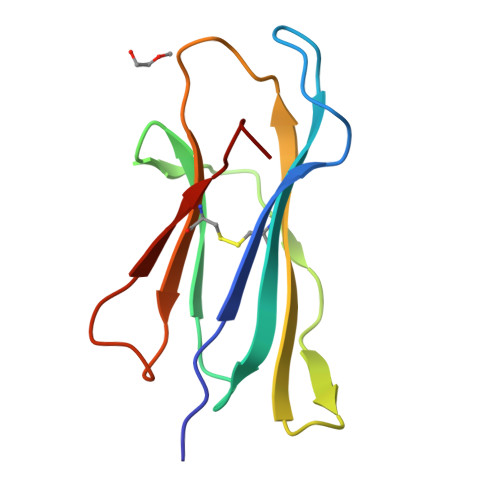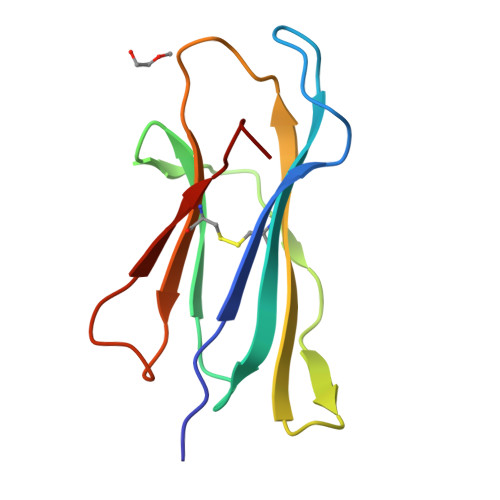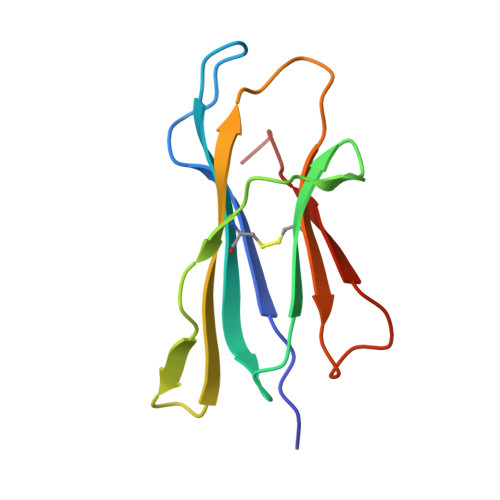Biochemical and biophysical comparison of human and mouse beta-2 microglobulin reveals the molecular determinants of low amyloid propensity.
Achour, A., Broggini, L., Han, X., Sun, R., Santambrogio, C., Buratto, J., Visentin, C., Barbiroli, A., De Luca, C.M.G., Sormanni, P., Moda, F., De Simone, A., Sandalova, T., Grandori, R., Camilloni, C., Ricagno, S.(2020) FEBS J 287: 546-560
- PubMed: 31420997
- DOI: https://doi.org/10.1111/febs.15046
- Primary Citation of Related Structures:
6I8C - PubMed Abstract:
The molecular bases of amyloid aggregation propensity are still poorly understood, especially for proteins that display a stable folded native structure. A prototypic example is human beta-2 microglobulin (β2m), which, when accumulated in patients, gives rise to dialysis-related amyloidosis. Interestingly, although the physiologic concentration of β2m in mice is five times higher than that found in human patients, no amyloid deposits are observed in mice. Moreover, murine β2m (mβ2m) not only displays a lower amyloid propensity both in vivo and in vitro but also inhibits the aggregation of human β2m in vitro. Here, we compared human and mβ2m for their aggregation propensity, ability to form soluble oligomers, stability, three-dimensional structure and dynamics. Our results indicate that mβ2m low-aggregation propensity is due to two concomitant aspects: the low-aggregation propensity of its primary sequence combined with the absence of high-energy amyloid-competent conformations under native conditions. The identification of the specific properties determining the low-aggregation propensity of mouse β2m will help delineate the molecular risk factors which cause a folded protein to aggregate.
Organizational Affiliation:
Science for Life Laboratory, Department of Medicine Solna, Karolinska Institute, Solna, Sweden.

















